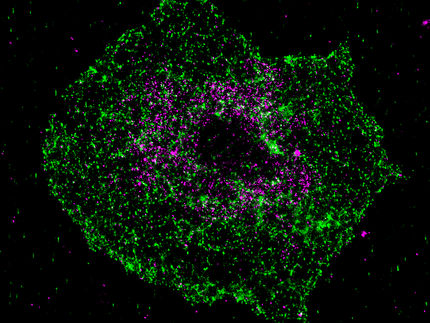Can education and occupation influence cardiovascular health and mortality?
Advertisement
Researchers of the Department of Cardiology – Cardiology I at the University Medical Center Mainz have shown that people with low socioeconomic status (SES) had a higher risk of developing a cardiovascular disease. They also had an increased risk of death. Educational attainment and employment status played a greater role than the income of the study participants. The results from the Gutenberg Health Study (GHS) were published in the current issue of the European Journal of Preventive Cardiology.
Cardiovascular diseases such as heart attacks and strokes are the most common cause of death worldwide. According to the World Health Organization (WHO), they account for around 18 million deaths each year. The causes of cardiovascular disease are diverse and complex. International studies suggest that socioeconomic status (SES), among other factors, may have an impact on cardiovascular health. SES is defined by the educational attainment, employment status as well as income.
However, previous studies on the influence of SES on health have been conducted primarily in countries where access to health care depends on income and occupation, such as the USA. The Gutenberg Health Study (GHS), on the other hand, is based on data from study participants in Germany. Here, health care is available throughout the country, so there should be no social discrimination in this respect. Nevertheless, the researchers found that there were significant differences in the cardiovascular health of study participants with low versus high SES.
The research team comprehensively investigated the influence of socioeconomic factors on cardiovascular health over a ten-year period as part of the GHS. Approximately 15,000 women and men aged 35 to 74 years from the Rhine-Main region participated in the study. The SES of the study participants was determined using a questionnaire in the context of computer-assisted interviews.
At the baseline examination, approximately 4,000 study participants had cardiovascular disease, such as atrial fibrillation, coronary artery disease, or vein thrombosis. These study participants were about 19 percent more likely to have preexisting cardiovascular disease than those with a high SES.
"At the 10-year follow-up, it was clear that people with low socioeconomic status had a 68 percent higher risk of developing a new cardiovascular disease. The mortality was also 86 percent higher in this group than in study participants with high SES. Interestingly, our results showed, that dimensions of education and occupation, but not household net income, were associated with higher risk of cardiovascular diseases", explains Dr. Omar Hahad, first author of the publication and researcher at the Department of Cardiology - Cardiology I at the University Medical Center Mainz.
The scientists were also able to identify the influence of SES on cardiovascular health when they considered it independently of lifestyle-associated risk factors such as alcohol consumption, smoking or physical activity.
"Our results show that we need to pay higher attention to the socioeconomic status - both in the care of individual patients and in clinical trials. Therefore, socioeconomic factors should be included in risk scores in order to improve health prognosis and to be able to initiate preventive measures earlier", said Univ.-Prof. Dr. Thomas Münzel, Director the Department of Cardiology at the University Medical Center Mainz.
The Gutenberg Health Study (GHS), launched in 2007, is a large-scale, representative population study in the Rhine-Main region. Its aim is to identify the risk factors and causes of major widespread diseases. Based on a population sample, more than 18,000 people have been examined with regard to their health over the past 15 years. A follow-up study is conducted every five years. The findings are intended to help improve medical prevention, diagnostics and therapy.
Original publication
Omar Hahad, Donya A Gilan, Julian Chalabi, Sadeer Al-Kindi, Alexander K Schuster, Felix Wicke, Matthias Büttner, Oliver Tüscher, Karl J Lackner, Peter R Galle, Stavros Konstantinides, Andreas Daiber, Philipp S Wild, Thomas Münzel; "Cumulative social disadvantage and cardiovascular disease burden and mortality"; European Journal of Preventive Cardiology, 2023-9-18

























































